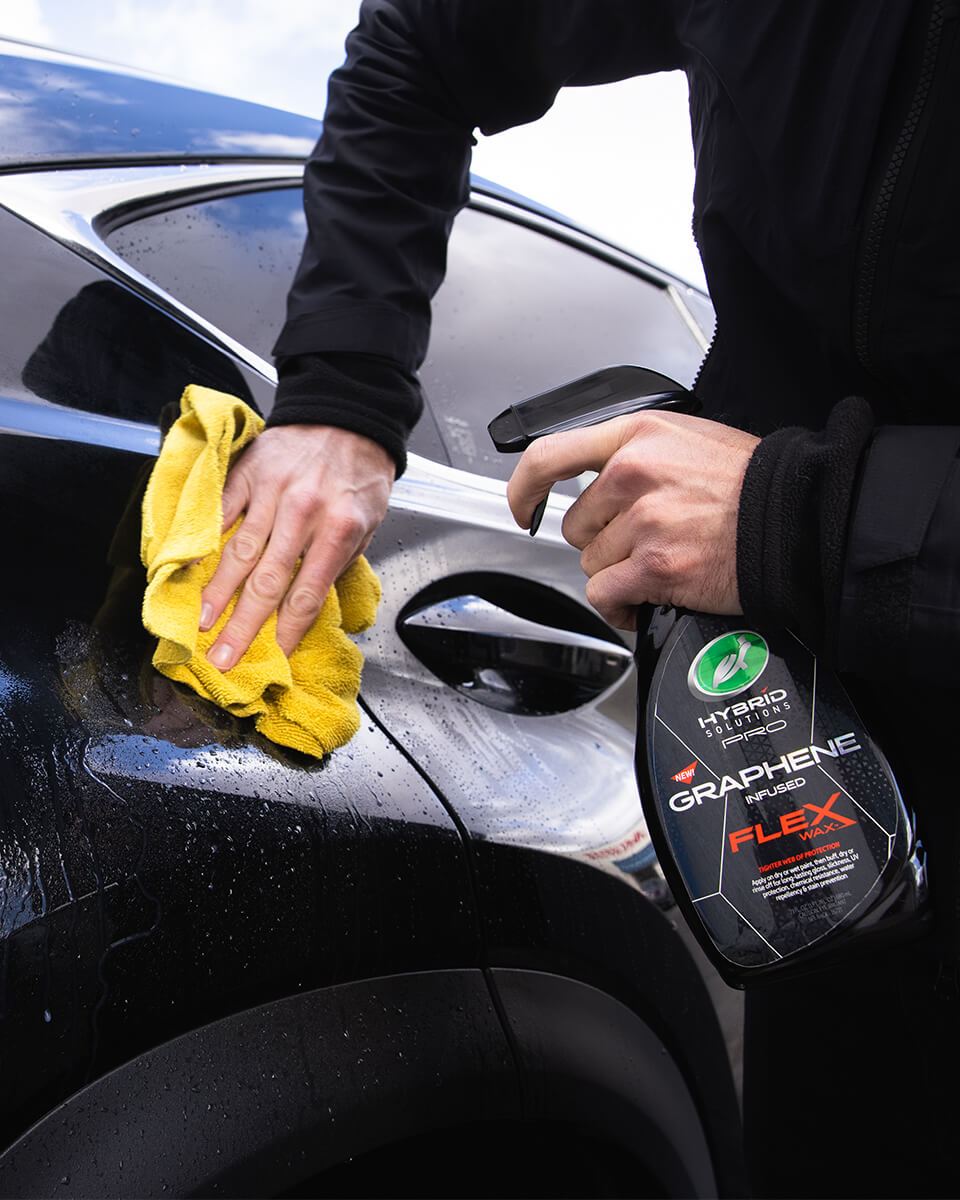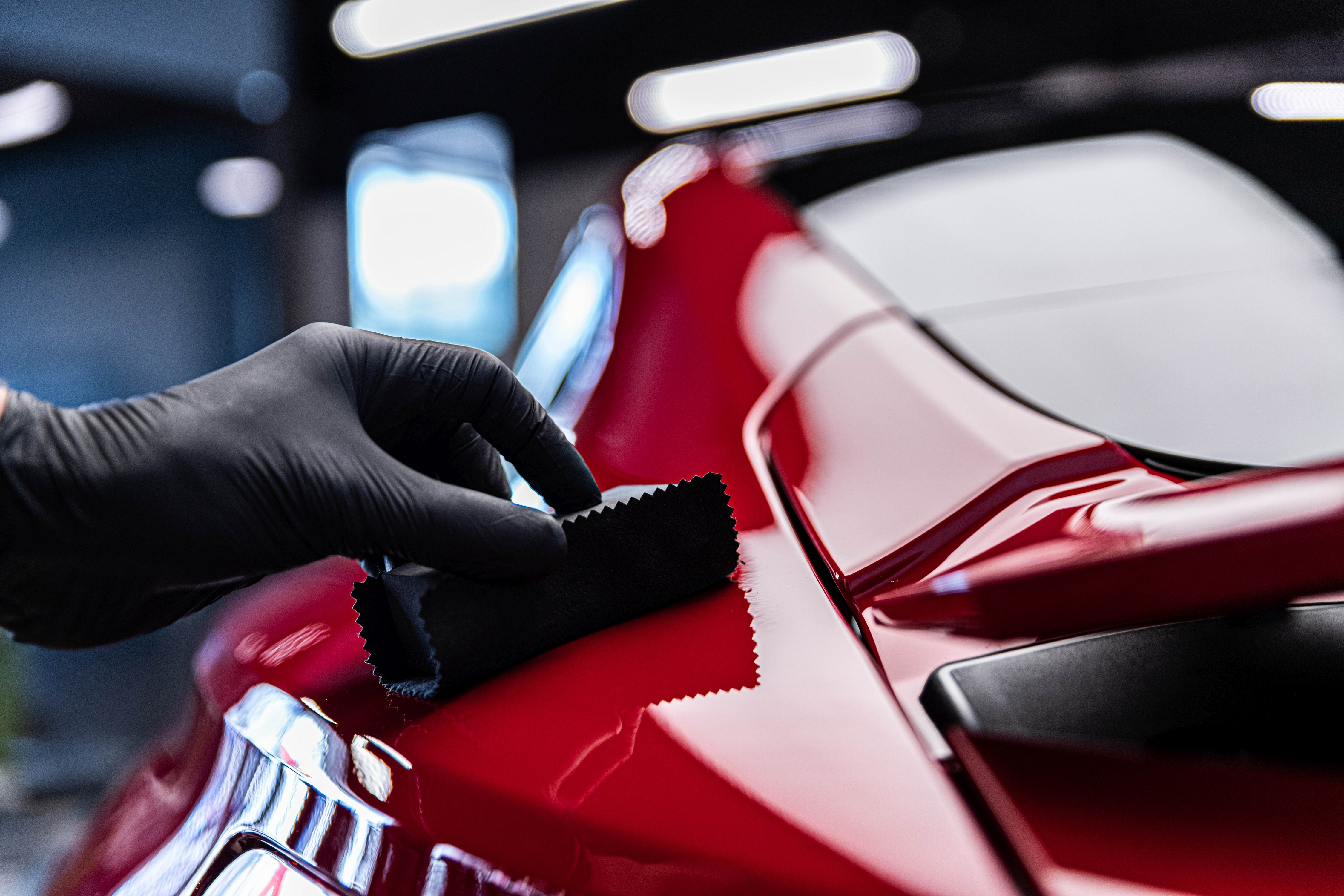Why families prefer Ceramic Coating Newark for safety
Wiki Article
Exploring the Scientific Research Behind Car Ceramic Coating and Its Safety Characteristics
The science of car ceramic coating presents a fascinating research study in innovative automotive security. Composed primarily of silicon dioxide and polymers, these coverings create a durable bond with car paint. This communication enhances toughness versus ecological risks while providing hydrophobic advantages. Nonetheless, the ins and outs of how these coatings job and their long-lasting advantages remain less recognized. Unpacking these information reveals why ceramic layers are ending up being a recommended option for car careWhat Is Ceramic Coating?
Ceramic coating is a fluid polymer that chemically bonds to the surface area of a lorry's paint. This innovative protective layer improves sturdiness and uses premium resistance to ecological elements. Unlike conventional wax or sealants, which supply temporary defense, ceramic coatings develop a long-lasting shield that can withstand severe problems such as UV rays, acidic impurities, and extreme climate. When used properly, the coating creates a hydrophobic surface, creating water to grain and slide off, which aids in preserving the automobile's tidiness. Furthermore, it offers boosted gloss and deepness to the paint, making the lorry show up more sleek and vibrant. The application process generally entails comprehensive surface area prep work, including cleaning and sprucing up, to ensure peak bonding. Because of this, ceramic coverings are becoming significantly preferred among car lovers and those seeking to safeguard their investments, guaranteeing to keep the car's visual charm while minimizing the regularity of upkeep.The Make-up of Ceramic Coatings
The detailed formulation of ceramic layers primarily consists of silicon dioxide (SiO2), which is stemmed from natural sources like quartz and sand. This crucial component gives the structure for the coating's longevity and safety high qualities. Along with SiO2, ceramic finishes commonly consist of numerous polymers and additives that boost attachment, versatility, and resistance to ecological variables. These compounds work synergistically to create a robust barrier versus pollutants such as dust, chemicals, and UV rays.Furthermore, some solutions include titanium dioxide (TiO2) or other nanomaterials, which can enhance the coating's hydrophobic residential properties, resulting in improved water repellency. The accurate make-up can vary significantly among suppliers, impacting efficiency and longevity. Ultimately, the combination of these elements culminates in a protective layer that not only enhances the aesthetic appeal of vehicles however also serves to lengthen their life-span by protecting the surface from prospective damage.Exactly How Ceramic Coatings Work
Recognizing exactly how ceramic layers work includes discovering their chemical structure, which contributes to their protective top qualities. The application procedure is necessary for achieving suitable outcomes, while longevity and durability variables figure out the coating's effectiveness with time. With each other, these elements highlight the advantages and efficiency of ceramic layers for car security.Chemical Make-up Explained
While lots of car proprietors look for durable defense for their automobiles, the chemical structure of ceramic finishes plays a crucial role in their efficiency. These coverings mainly are composed of silicon dioxide (SiO2), which is obtained from natural minerals. This substance develops a solid bond with the car's paint, creating a sturdy, protective layer. Furthermore, several ceramic coatings have titanium dioxide (TiO2), improving their hydrophobic residential or commercial properties and resistance to UV rays. The visibility of polysiloxanes can better boost adaptability and durability. Together, these elements add to the coating's ability to drive away water, dirt, and pollutants, while additionally giving a high-gloss coating. Understanding this chemical structure assists car proprietors appreciate the durable defense offered by ceramic finishes.Application Process Overview
Applying ceramic coverings entails a precise procedure that assures ideal bonding and protection for the car's surface area. At first, complete cleaning and purification of the car's outside are carried out to eliminate dust, crud, and previous waxes. This step validates that the surface area is without impurities that can prevent adhesion. Following this, the paint is often brightened to improve clarity and eliminate any blemishes. Once prepared, the ceramic coating is applied in tiny sections making use of an applicator pad, permitting uniform protection. The coating is after that left to treat, forming a solid chemical bond with the surface. Proper treating times and conditions are essential, as they verify the coating attains its optimum efficiency and safety top qualities.Long Life and Sturdiness Factors
Ceramic coatings are created to offer lasting defense with their innovative chemical structure, which creates a durable barrier against environmental impurities. The toughness of these layers is affected by elements such as the density of the application, the high quality of the item, and the conditions under which the automobile is revealed. Premium ceramic coverings can last several years, standing up to scratches, UV rays, and his response chemical discolorations. Correct upkeep, including routine cleaning and routine reapplication, can further enhance longevity. Furthermore, ecological elements like environment and exposure to toxins can impact the lifespan of the coating. Overall, when applied and preserved properly, ceramic layers offer phenomenal resilience, making them a preferred option for car enthusiasts looking for to maintain their car's look.Hydrophobic Features and Water Repellency
Hydrophobic properties are a characteristic of high quality car ceramic finishes, substantially boosting the car's surface area efficiency. These coverings develop a molecular bond with the car's paint, leading to a surface area that wards off water effectively. When water comes right into contact with a ceramic-coated surface area, it grains up and rolls off, lessening the amount of fluid that stays on the paint. This habits not just adds to a visually pleasing appearance but also lowers the build-up of pollutants such as dirt, grime, and roadway salts.The boosted water repellency results in simpler cleaning and upkeep, as much less effort is required to remove unwanted compounds. In enhancement, the hydrophobic nature of ceramic layers assists in preventing water areas, which can mar the surface of uncoated surface areas. Overall, the incorporation of hydrophobic residential or commercial properties in ceramic layers plays an essential role in keeping the lorry's immaculate appearance while streamlining upkeep.Protection Against Scratches and UV Damage
Car ceramic coatings provide substantial defense versus scratches and UV damage. The scrape resistance system creates a resilient layer that absorbs influences, while the UV protecting advantages assist maintain the car's paint stability in time. Together, these features contribute to a longer-lasting and visually appealing surface.Damage Resistance Mechanism
Using sophisticated modern technology, ceramic coverings provide a durable guard versus scrapes and UV damages, boosting the long life and appearance of automobile surfaces. The scratch resistance mechanism of these finishes is credited to their unique molecular structure, which develops a sturdy bond with the automobile's paint. This bond creates a hard, protective layer that can soak up impacts and stand up to abrasions. In addition, the smooth surface area of the coating reduces friction, making it hard for contaminants to stick and trigger scratches. The chemical make-up of ceramic navigate to this website finishes often includes nanoparticles that strengthen the safety layer, further boosting its strength. Subsequently, vehicles treated with ceramic layers show significantly boosted scrape resistance compared to traditional wax or sealants, guaranteeing a pristine coating in time.UV Protecting Advantages
The safety qualities of ceramic finishes extend past scratch resistance to include significant UV protecting advantages. These finishings create a robust obstacle that mirrors damaging ultraviolet rays, protecting the lorry's paint and underlying materials. Prolonged exposure to UV radiation can lead to fading, oxidation, and wear and tear of the paint coating. By incorporating ceramic finishings, automobile owners can effectively alleviate these threats, protecting the aesthetic appeal and integrity of their cars and trucks. In addition, the UV obstructing homes add to improved durability, decreasing the frequency of repainting and upkeep. Ultimately, the assimilation of ceramic finishes uses a detailed remedy for shielding automobiles from the destructive impacts of sunlight direct exposure, ensuring a continual, lively appearance with time.The Longevity and Upkeep of Ceramic Coatings

Often Asked Concerns
Can Porcelain Coating Be Applied to Any Type of Car?
Ceramic coating can be put on various kinds of vehicles, including cars, vehicles, and bikes. Nevertheless, surface area prep work and compatibility with details materials are crucial for optimal adhesion and performance of the coating.Exactly How Much Does Ceramic Coating Commonly Price?
Ceramic coating normally costs in between $500 and $2,000, depending upon elements such as automobile size, coating high quality, and specialist application. The investment can supply lasting security and improve the vehicle's look over time.
Is Specialist Application Required for Ideal Outcomes?
The necessity of specialist application often depends upon desired outcomes. Professionals typically ensure proper surface area preparation and application strategies, bring about optimal bonding and longevity of the coating, which might be testing for inexperienced individuals to accomplish.Can Porcelain Coatings Be Removed or Repaired?
Ceramic layers can be removed or fixed, though the process may call for particular solvents or techniques - Ceramic Coating Newark. Proper removal is important to stay clear of damage to the underlying surface, stressing the relevance of professional help for optimal resultsHow Does Porcelain Coating Compare to Typical Wax?
The contrast between ceramic coating and standard wax discloses that ceramic layers provide remarkable sturdiness, enhanced defense versus environmental impurities, and longer-lasting luster, while wax requires a lot more constant application and gives less total resistance to damages.Report this wiki page